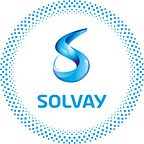What does open innovation look like on a continental scale?
With its €70 billion budget and its continental reach, Horizon 2020 is the most ambitious research and innovation program the European Union has ever seen. Solvay, along with the entire European chemistry ecosystem, has been an active participant in the framework program since its launch in 2014.
More than a group policy, collaboration at Solvay is a state of mind. Whether working with university researchers, business partners of all sorts, NGOs or even by investing directly in startups, Solvay keeps its doors open, firmly believing in the virtues of open innovation. So it only makes sense that the Group should be involved in a program such as Horizon 2020 that aims to create “fruitful collaborations between the value chain partners” in order to boost Europe’s competitiveness and economic growth.
European framework programs aren’t a new thing in themselves: the EU, like most government bodies around the world, has a long-standing habit of granting funds in order to promote innovation on its territory. But Horizon 2020 (or H2020) is the first program of such large scope, with €70 billion to be distributed over the 2014–2020 period, and with a perimeter that goes beyond scientific research and industrial innovation, as it aims to embrace societal challenges as well. In fact, the central theme of H2020 is sustainable development in all its dimensions: societal, economical and of course environmental.
So how does H2020 work, and how is Solvay involved? The European Commission, advised by in-house and external experts, elaborates work programs focused on Key Enabling Technologies, for example advanced materials, nanomaterials, biotechnologies, advanced manufacturing, etc. A wide range of stakeholders contributes to these programs: universities, research centers, large industrial companies, SMEs, startups, as well as professional federations. Solvay, a member of the European Chemical Industry Council (CEFIC), has an important role to play here. “It is important that the European Chemical Industry meet the global challenges of the European strategy, and vice versa,” explains Thierry Collard, Research & Innovation External Affairs Manager Europe. “Through its federation, the chemical industry has strongly contributed to writing technological roadmaps dedicated to sustainable chemistry, for example.”
Once the work programs have been defined, the R&I External Affairs team gets involved — the earlier in the process, the better. “After having contributed to the writing of the work programs through our internal experts, we are always eager to receive the final version as early as possible. This process allows us to identify the best opportunities in terms of calls for proposals that are in line with Solvay’s innovation strategy, and we directly contact our potentially interested internal stakeholders.”
But as mentioned, these programs are not just about industrials collaborating — they’re about fostering an ecosystem working together to drive European innovation (and create jobs in the process). “We regularly get contacted by potential partners (academics, research centers, SMEs) who would like to collaborate with Solvay on a given topic within H2020,” says Thierry.
Furthermore, “brokerage events” are meetings where all the stakeholders (researchers, companies, academics) come together in order to look for new open innovation opportunities. Many new partnerships and projects emerge from such events.
Solvay has been involved in European collaborative projects for several years. Within FP7, the framework program that came before H2020, over 30 collaborative projects have delivered concrete results, paving the way for further developments and the commercialization of new solutions in diverse applications: advanced fluorinated materials for li-Ion batteries, more efficient water management in the chemical industry, supercapacitors with high energy density, the next generation of molecular “soft matter”, etc.
Since the beginning of Horizon 2020 in 2014, the group has submitted about 30 projects of several types and has been concretely involved in 13, including STYLE (Sustainability Toolkit for Easy Life-Cycle Evaluation), that has delivered a series of practical and operational recommendations to assess industrial processes and product projects, and CONSENS, a project dedicated to flexible intensified processes, paving the way to “Industry 4.0”. “Our R&I teams are also involved in still running projects dedicated to other strategic topics like new generation batteries (ECLIPSE, NAIADES), advanced materials for heterogeneous catalysis (MULTI2HYCAT), advanced materials for energy storage (HPEM2GAS) and smart materials (1D-NEON)”, adds Thierry.
During the first phase of H2020 (2014–2015), about €15 billion were funded, for a total of more than 9000 projects. With a global funding of €4,6 million, Solvay ranks at the 5th place among chemical companies. “The final phase of H2020 (2018–2020) has just started and will give us new opportunities in terms of partnerships and funded projects.”
As mentioned, beyond the funding, the networking benefits of H2020 are important as well. “In today’s environment where things move so fast, working collaboratively is the only way to keep up and accelerate time-to-market, and also to discover partners we wouldn’t necessarily have known about otherwise”, continues Thierry. “H2020 is the only program that brings everybody together.”
In its final phase, H2020 is focusing on research subjects that are closer to the market and industrial innovations — the first years of the program were dedicated to fundamental research and not-yet-mature technologies. “Ideally, the last phase of the H2020 framework program will lead to the concretization of ambitious projects closer to the market. The industry has an essential role to play in this phase, by contributing to the creation of new pilot lines and demonstration plants.”
And then what? The European Commission has initiated a consultation about FP9, the next framework program that will begin in 2020, and a high-level reflection group has already provided its key recommendations. As a member of CEFIC, Solvay participates in the debates, publishing position papers, making proposals… and generally weighing in on the next few years of European research and innovation.
Originally published at www.solvay.com.
